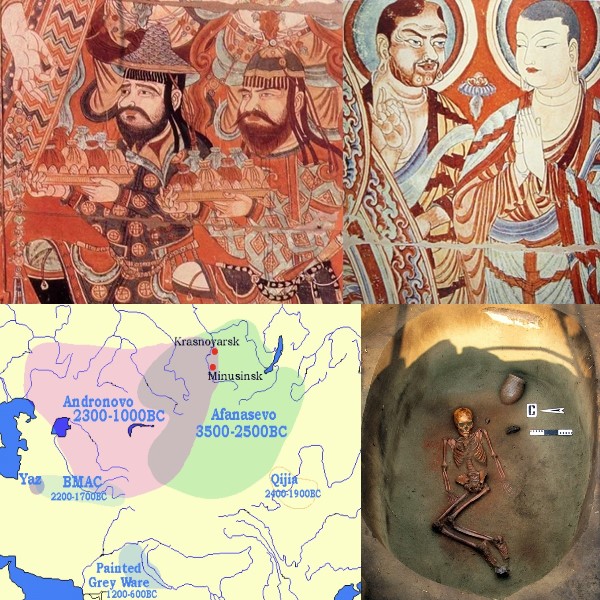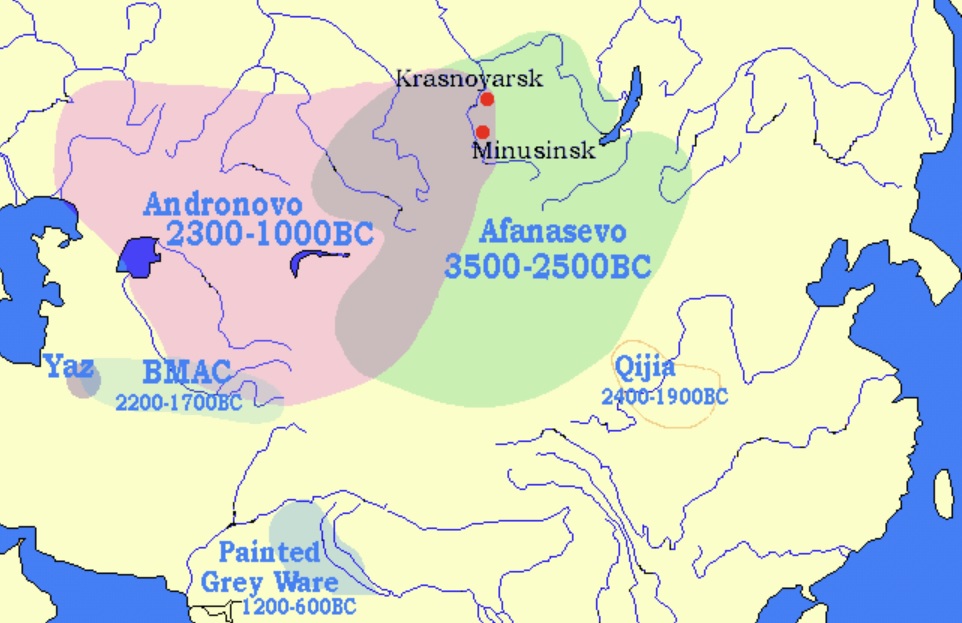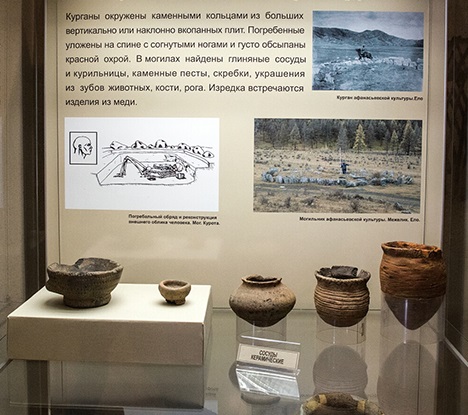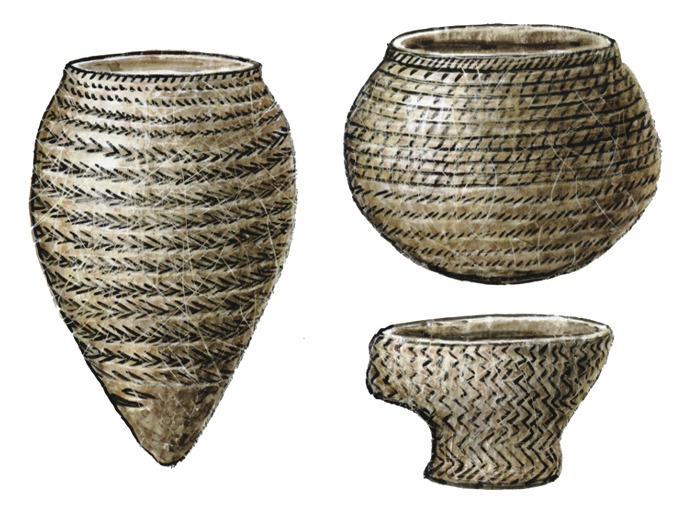Afanasievo Culture

This culture existed from 3500 BC to 2500 BC in South Siberia, occupying the Minusinsk Basin and the Altai Mountains during the Eneolithic era.
The Afanasievo economy included cattle, sheep, and goat. Horse remains, either wild or domestic, have also been found. The Afanasievo people became the first food-producers in the area[1]. The emergence of the Afanasievo Culture in the Altai Mountains appears to have coincided with the arrival of domesticated sheep, goats and cattle. However, Afanasievo sites also contain wild counterparts of these domesticated livestock species. In the Afanasievo settlement site Nizhnyaya Sooru five out of five analyzed tooth specimens were identified as ovis aries (domestic sheep). Radiocarbon determinations taken from two of these date to 3300 BC - 2900 BC. This is the earliest evidence of spread of Near Eastern domesticated animals to Inner Asia[2].
Tools were manufactured from stone (axes, arrowheads), bone (fish-hooks, points) and antler. Among the antler pieces are objects that have been identified as possible cheek-pieces for horses. Artistic representations of wheeled vehicles found in the area has been attributed to the Afanasievo Culture. Ornaments of copper, silver and gold have also been found.
💀 Mass graves were not usual for this culture. Afanasievo cemeteries include both single and small collective burials with the deceased usually flexed on his back in a pit. The burial pits are arranged in rectangular, sometimes circular, enclosures marked by stone walls. It has been argued that the burials represent family burial plots with four or five enclosures constituting the local social group. 💀
Gallery Of Artifacts
DNA
According to Allentoft et al. (2015) and Haak et al. (2015), Afanasievo were genetically indistinguishable from the yamna people. Only three Afanasievo male samples have had their paternal lineage results published, and all three, like most Yamna males, belong to a haplogroup R1b, with two of them belonging to the R1b-M269 subclade. Among the female samples two carried the mtDNA haplogroup J2a2a, one carried T2c1a2, and one carried U5a1a1. The Afanasievo people were also found to be closely related to the Poltavka Culture.
Allentoft et al. (2015) study also confirms that the Afanasievo Culture was replaced by the second wave of Indo-European migrations from the Andronovo Culture during the late Bronze Age and early Iron Age. Tarim mummies were also found to be genetically closer to the Andronovo Culture than to the Yamna Culture or Afanasievo Culture.
In 2019 Narasimhan et al. analyzed the remains of 24 individuals ascribed to the Afanasievo Culture. 10 out of 14 belonged to Y-DNA haplogroup R1b1a1a2a2 (R1b-Z2103 common in modern Albania, Armenia and Hittite Turkey), 1 belonged to R1b1a1a2a (R1b-Z2105 from R1b-L23), and 3 belonged to Q1a2. The mtDNA samples belonged to subclades of U (particularly of U5), along with T, J, H and K. The authors interpreted these results as evidence for a migration from the Pontic–Caspian Steppe[3].
Article updated on the 30th of October 2021 and 8th of November 2021.



